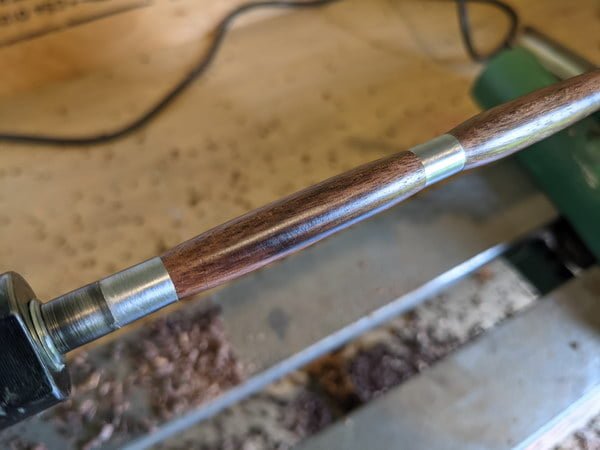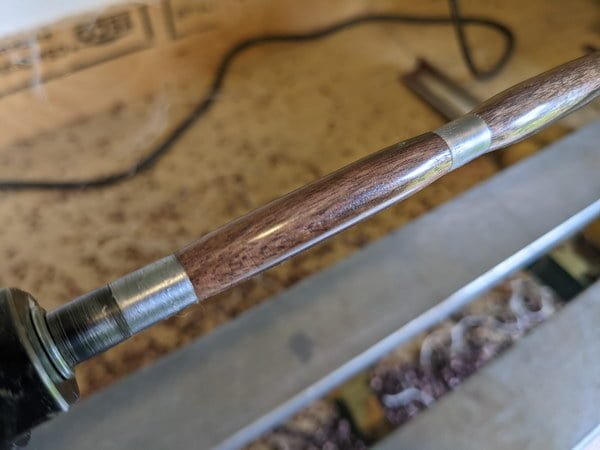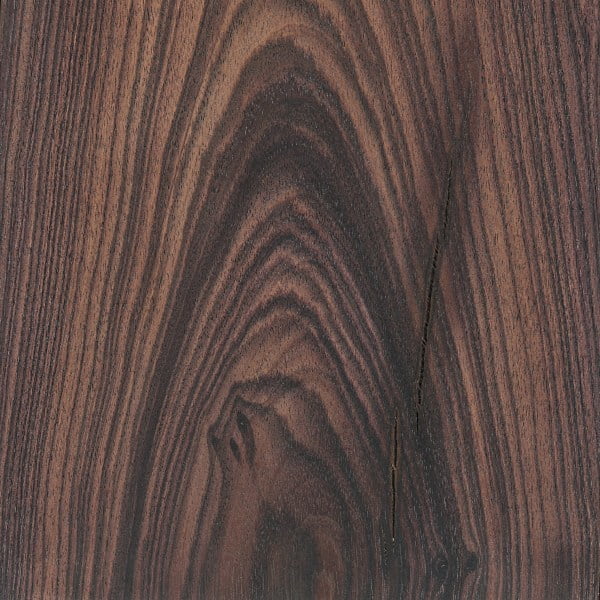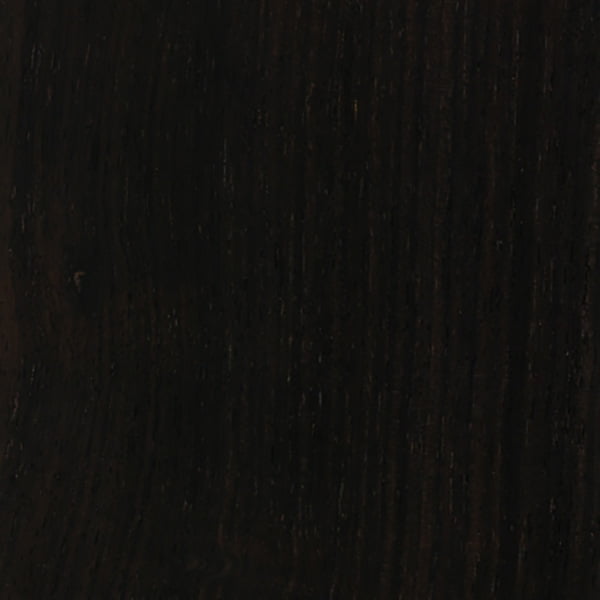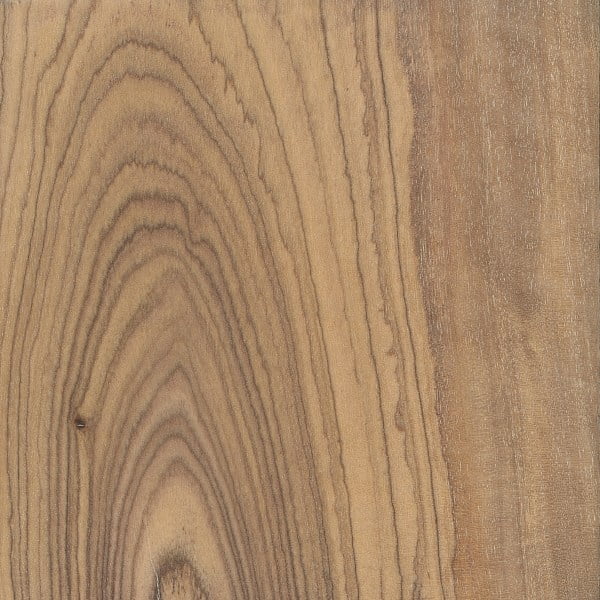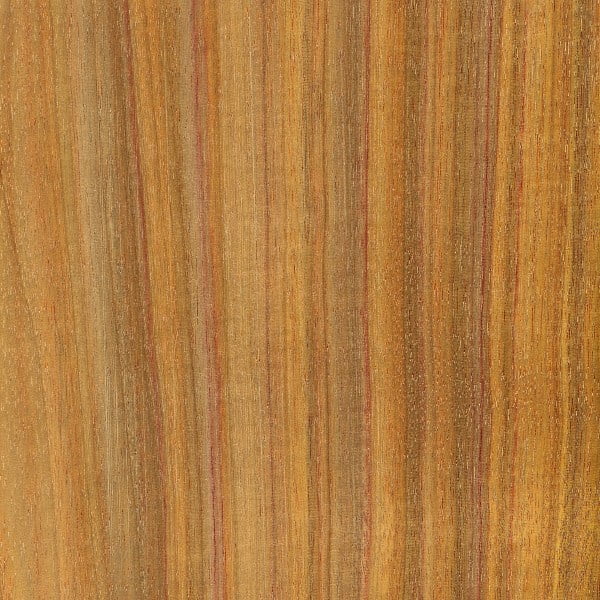Most turners use Cyanoacrylate glue (CA glue) for finishing wood pens. It makes a beautiful, very hard and long lasting finish for things that will be handled a lot. It is expensive though so it is usually used only on the small turnings.
I have found that by using some boiled linseed oil along with the CA glue makes a nicer finish though. The linseed oil works as an accelerant to speed up the curing of the CA glue, but also helps to spread it more evenly as it cures.
First off the raw turned wood or acrylic must be as fine a finish as I can make it. I sand my pieces to 12000 grit sandpaper so they basically look like they have a finish on them already.
Then I wet a paper towel with some boiled linseed oil and hold it around the piece, with the lathe turning slowly, I apply drops of CA glue along the wood. I run the paper towel up and down the piece as quickly as I can to spread the glue. Then I turn the speed up on the lathe and move the paper towel up and down again as fast as I can. This buffs the surface with the dried glue that is on the paper towel. I do this eight times giving a beautiful long lasting finish.
Lastly I buff the object with three different buffing wheels to privide a mirror like surface.



